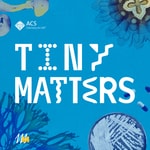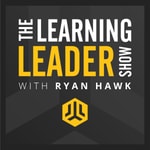Tiny Matters – Details, episodes & analysis
Podcast details
Technical and general information from the podcast's RSS feed.

Tiny Matters
Multitude
Frequency: 1 episode/11d. Total Eps: 129

Take a dive into the genes, microbes, molecules and other tiny things that have a big impact on our world with Tiny Matters. Join scientists Sam Jones and Deboki Chakravarti as they take apart complex and contentious topics in science and help rebuild your understanding. From deadly diseases to ancient sewers to forensic toxicology, Sam and Deboki embrace the awe and messiness of science and its place in the past, present, and future. Tiny Matters releases new episodes every Wednesday and is brought to you by the American Chemical Society, a non-profit scientific organization advancing chemistry and connecting the broader scientific community. Tiny Matters is produced by Multitude.
Recent rankings
Latest chart positions across Apple Podcasts and Spotify rankings.
Apple Podcasts
🇨🇦 Canada - lifeSciences
01/08/2025#57🇬🇧 Great Britain - lifeSciences
01/08/2025#41🇩🇪 Germany - lifeSciences
01/08/2025#93🇺🇸 USA - lifeSciences
01/08/2025#25🇫🇷 France - lifeSciences
01/08/2025#84🇨🇦 Canada - lifeSciences
31/07/2025#50🇬🇧 Great Britain - lifeSciences
31/07/2025#27🇩🇪 Germany - lifeSciences
31/07/2025#70🇺🇸 USA - lifeSciences
31/07/2025#25🇫🇷 France - lifeSciences
31/07/2025#67
Spotify
No recent rankings available
Shared links between episodes and podcasts
Links found in episode descriptions and other podcasts that share them.
See all- https://www.instagram.com/p
11467 shares
RSS feed quality and score
Technical evaluation of the podcast's RSS feed quality and structure.
See allScore global : 53%
Publication history
Monthly episode publishing history over the past years.
[BONUS] Cleaning up brain junk while you sleep and new neurons from exercise: Tiny Show and Tell Us #5
mercredi 28 août 2024 • Duration 17:56
In this episode of Tiny Show and Tell Us, we cover neurogenesis in adulthood (yes! your brain can make new neurons even as you age), the link between exercise and increased neurogenesis in the hippocampus, and the implications that could have for neurodegenerative diseases like Alzheimer's. We continue on our brain-focused episode with the role cerebrospinal fluid plays in cleaning out your brain while you sleep and how its movement is in fact influenced by your brain waves.
We need your stories — they're what make these bonus episodes possible! Write in to tinymatters@acs.org *or fill out this form* with your favorite science fact or science news story for a chance to be featured in a future episode and win a Tiny Matters mug!
Pig hearts in people: Xenotransplantation's long history, current promise, and the ethical use of people who are brain-dead in research
Episode 66
mercredi 21 août 2024 • Duration 28:17
In the early hours of January 7, 2022, David Bennett was out of options. At just 57 years old, he was bedridden, on life support, and in desperate need of a heart transplant for which he was ineligible. Yet Bennett would go on to live for two more months — not with a human heart, but with a heart from a pig. David Bennett was the first case of a pig heart being transplanted into a human, an example of xenotransplantation — when the cells, tissues or organs from one species are transplanted into another. In the United States, over 100,000 kids and adults are currently on the national transplant waiting list, and every day around 17 people on that list die while waiting.
In today's episode, we cover the science and historical research that made Bennett’s transplant possible, and what doctors learned from him that helped the next heart xenotransplant recipient, Lawrence Faucette, live even longer. We also get into some of the ethics conversations surrounding xenotransplantation work — not just questions about the use of animals like pigs and baboons, but experiments with recently deceased, i.e. brain dead, people.
Check out Jyoti Madhusoodanan's Undark story, "The Allure and Dangers of Experimenting With Brain-Dead Bodies" here. Her JAMA story we mention, also on xenotransplantion, is here.
Send us your science stories/factoids/news for a chance to be featured on an upcoming Tiny Show and Tell Us episode and to be entered to win a Tiny Matters coffee mug! And, while you're at it, subscribe to our newsletter at bit.ly/tinymattersnewsletter.
Links to the Tiny Show & Tell stories are here and here. Pick up a Tiny Matters mug here! All Tiny Matters transcripts are available here.
‘Beef snow,’ sludge, and seafood fraud: How NIST standardizes everything from $1,143 peanut butter to house dust to keep us safe
Episode 62
mercredi 26 juin 2024 • Duration 30:04
Standard reference materials — or SRMs — at the National Institute of Standards and Technology (NIST) serve as standards for many food, beverage, health, industrial and other products. There are over a thousand SRMs including peanut butter, house dust, dry cat food, soy milk, blueberries, stainless steel, fertilizer, and a DNA profiling standard. SRMs help make products safer and ensure that consumers are getting what they think they’re getting. But how do they work exactly?
In this episode of Tiny Matters, Sam and Deboki cover SRMs that are helping us accurately detect toxic substances like lead and pesticides in our house dust, fight seafood fraud, and keep PFAS out of our meat. Sam also travels to the NIST headquarters outside of Washington, DC to get a behind the scenes tour of how SRMs are made. She even gets a chance to snoop around the warehouse where SRMs are stored.
Email us your science stories/factoids/news that you want to share at tinymatters@acs.org for a chance to be featured on Tiny Show and Tell Us!
Tiny Matters has a YouTube channel! Full-length audio episodes can be found here. And to see video of Sam, Deboki, and episode guests, check out Tiny Matters YouTube shorts here. A video showing 'beef snow' and a bunch of other SRMs is here.
Links to the Tiny Show & Tell stories are here and here. Pick up a Tiny Matters mug here! All Tiny Matters transcripts are available here.
From volcanoes and Swiftquakes to buzzing bees: How scientists use sound to understand our environment
Episode 61
mercredi 12 juin 2024 • Duration 32:27
At the end of 2016, a pilot reported that a volcano in Alaska called Bogoslof was erupting. Bogoslof had been quiet for 24 years, and there wasn’t any equipment on it that scientists could use to track its eruptions. But over the next 8 months, scientists were able to track at least 70 eruptions from Bogoslof, and they did so using something you might not expect: sound.
In this episode of Tiny Matters, we’ll cover what sound can tell us about events as big as volcanoes and ‘Swiftquakes’ and as small as the insect world, where researchers are using AI to track different insect species, leading to important discoveries that could help not just public health but agriculture and climate policy.
Email us your science stories/factoids/news that you want to share at tinymatters@acs.org for a chance to be featured on Tiny Show and Tell Us!
Tiny Matters has a YouTube channel! Full-length audio episodes can be found here. And to see video of Sam, Deboki, and episode guests, check out Tiny Matters YouTube shorts here. Links to the Tiny Show & Tell stories are here and here. Pick up a Tiny Matters mug here! All Tiny Matters transcripts are available here.
Long COVID: What we’re learning about pathogens and chronic illness goes beyond COVID-19
Episode 60
mercredi 29 mai 2024 • Duration 47:36
On March 11, 2020, after over 118,000 cases of COVID-19 had been reported in 114 countries, the World Health Organization declared COVID-19 a pandemic. The term Long COVID began popping up across the globe shortly after. People with Long COVID experience any combination of a huge number of symptoms that range from gastrointestinal issues to brain fog to extreme exhaustion and an inability to do what were once pretty simple tasks like getting dressed, preparing meals, or even getting out of bed.
Although we have a ways to go before we understand a disease as complex as Long COVID, over the last few years scientists have made significant research strides and the millions of people suffering from Long COVID have brought light to health conditions including ME/CFS, that many people didn’t previously realize existed. In this episode, you’ll hear from an ME/CFS researcher, a Long COVID patient about her difficult and winding experience to understand what was happening in her body following a COVID infection, and a journalist and author who recently wrote a book on Long COVID.
Here's a link to Ryan Prior's book, The Long Haul: How Long Covid Survivors Are Revolutionizing Health Care. And here's a list of Long COVID resources:
- https://www.covid.gov/be-informed/longcovid
- https://solvecfs.org/solve-long-covid/long-covid-resources/
- https://www.bu.edu/ceid/training-education/long-covid-resources/
- https://longcovidalliance.org/
Tiny Matters has a YouTube channel! Full-length audio episodes can be found here. And to see video of Sam, Deboki, and episode guests, check out Tiny Matters YouTube shorts here!
Links to the Tiny Show & Tell stories are here and here. Want to watch Sam talk about the (proposed) connection between lead and the fall of the Roman Empire? Watch that video here. Pick up a Tiny Matters mug here! All Tiny Matters transcripts are available here.
Mysteries in the museum: How textile conservators investigate and preserve historic clothing
Episode 59
mercredi 15 mai 2024 • Duration 31:46
A week ago, the Metropolitan Museum of Art held its 2024 Met Gala — a yearly event to raise money for the Costume Institute. The gala also marks the opening of the Costume Institute's annual show, which this year is called "Sleeping Beauties: Reawakening Fashion." The idea behind this exhibit is to showcase pieces from the museum's collection that are too delicate to show on mannequins. Instead, the exhibit will feature recreations of the pieces using AI and 3-D techniques, along with sound and smell. But what about textiles that museums choose to display — how is science used to maintain these incredible, often fragile, pieces of the past?
In this episode of Tiny Matters, Sam and Deboki cover the fascinating textile landscape, from plant-based fibers to the evolution of modern synthetic materials and the investigative approaches used to preserve not just these fabrics but also the stories they tell and the cultural significance they hold.
We have a YouTube channel! Full-length audio episodes can be found here. And to see video of Sam, Deboki, and episode guests, check out Tiny Matters YouTube shorts here!
Links to the Tiny Show & Tell stories are here and here. Pick up a Tiny Matters mug here! All Tiny Matters transcripts are available here.
The curable disease that kills someone every 20 seconds: Tuberculosis (ft. John Green)
Episode 58
mercredi 1 mai 2024 • Duration 33:53
Every year, tuberculosis claims over a million lives despite being curable. Tuberculosis or TB is an infectious disease caused by Mycobacterium tuberculosis. About 5–10% of people infected with TB will eventually get symptoms. In the early stages a TB infection might cause chest pain, a cough, night sweats, and loss of appetite. But eventually it could create holes in the lungs and cause you to cough up blood. And of course, TB can be deadly.
In this episode of Tiny Matters, Sam and Deboki talk with TB researcher Uzma Khan as well as John Green, the author of books including The Anthropocene Reviewed, Paper Towns, The Fault in Our Stars, and Turtles All the Way Down. John is also the co-creator of Crash Course and one half of the vlogbrothers — the other half being his brother Hank Green, who Deboki and Sam chatted with on the show last year.
Although he's best known as an author and YouTuber, last summer John made headlines for something else: fighting for more equitable access to tuberculosis treatments, particularly bedaquiline, an incredibly effective and essential medicine for patients with drug-resistant tuberculosis.
In this episode, Sam and Deboki cover the science and history of this devastating yet treatable disease, the recent public pressure on companies that is leading to increased treatment and testing access, and clinical trials that make John and Uzma hopeful that one day this humanity-plaguing disease could be gone.
If you’d like to learn more, go to tbfighters.org. You can also subscribe to John’s newsletter: tbfighters.org/newsletter.
We have a YouTube channel! Full-length audio episodes can be found here. And to see video of Sam, Deboki, and episode guests, check out Tiny Matters YouTube shorts here!
Links to the Tiny Show & Tell stories are here and here. Pick up a Tiny Matters mug here! All Tiny Matters transcripts are available here.
Introducing 'Tiny show and tell us' (send us your stories!)
mercredi 1 mai 2024 • Duration 01:33
Deboki and Sam put out a survey last month asking Tiny Matters listeners for feedback and were overwhelmed by the number of people who asked for more Tiny Matters episodes! At Tiny Matters, we like to give the people what they want, so we're going to begin releasing bonus episodes soon. But to do that, we need your help.
If you're a regular Tiny Matters listener you are well aware of something called the Tiny Show and Tell. At the end of every episode, Deboki and Sam each take a few minutes to share a science discovery or piece of news or maybe a science article they came across and found fascinating. Now they want YOU to share something!
Email tinymatters@acs.org with some science news you’re itching to share, a cool science factoid you love telling friends about, or maybe even a personal science story.
In these new “Tiny Show & Tell Us” bonus episodes, Deboki and Sam will read your emails out loud and then go a bit deeper into the tiny science of it all.
Arsenic, radium, and a locked room cyanide mystery: Poisons and the rise of forensic toxicology in early 1900s United States
Episode 57
mercredi 17 avril 2024 • Duration 31:51
At the beginning of the 1900s, New York City was in turmoil. Prohibition loomed, outbreaks of typhoid and an influenza pandemic had people on edge, and the city was steeped in corruption. One of the many consequences of that corruption was a completely inept coroners office.
Instead of having trained medical examiners work out the causes of sudden and suspicious deaths, New York City coroners were politically appointed. And they didn’t have the slightest idea of how to do a thorough autopsy. They were sign painters and milkmen and funeral home operators and people who had done favors for the party. They bungled the cause of death so consistently and so dramatically that the police and the district attorney's office told coroners to stay away from their crime scenes.
This was a horrific situation, unless you were a poisoner. In January, 1915, New York City’s government released a report saying that murderers were easily escaping justice and that “skillful poisoning can be carried on almost with impunity.”
In this episode of Tiny Matters, Sam and Deboki chat with Pulitzer Prize-winning journalist Deborah Blum, the author of The Poisoner’s Handbook, about the rise of forensic toxicology in the United States. Listeners will be taken on a journey through some of the disturbing poisoning cases of the time that helped lay the groundwork for the field — with a focus on arsenic, radium and cyanide — and the pivot role medical examiner Charles Norris and chemist Alexander Gettler played in restoring public safety and finally stopping poisoners in their tracks.
We have a YouTube channel! Full-length audio episodes can be found here. And to see video of Sam, Deboki, and episode guests, check out Tiny Matters YouTube shorts here!
We love our listeners and we want to bring you more of what you like! Head to bit.ly/tinypodsurvey to give us feedback and help us make Tiny Matters even better. The survey should take no more than 5-10 minutes to fill out. Your motivation? Filling out the survey will enter you into a Tiny Matters mug raffle!
Links to the Tiny Show & Tell stories are here and here. Pick up a Tiny Matters mug here! All Tiny Matters transcripts are available here.
IVF: The history, science and struggle that gave rise to a life-changing technology
Episode 56
mercredi 3 avril 2024 • Duration 29:33
On July 25th, 1978, in the northwest of England, a baby was born. On its surface, that’s not a big statement — babies are born every single day. But this birth attracted media attention from around the world. The baby’s name was Louise Brown, and she was the first baby born from in vitro fertilization, or IVF.
In this episode of Tiny Matters, Sam and Deboki answer a question that came from a listener who asked, “How on earth did they come up with IVF?” They cover the science behind IVF, the research and people — both scientists and patients — that made it possible, how it has improved over the years, and both the historical and current challenges it faces.
We have a YouTube channel! Full-length audio episodes can be found here. And to see video of Sam, Deboki, and episode guests, check out Tiny Matters YouTube shorts here!
We love our listeners and we want to bring you more of what you like! Head to bit.ly/tinypodsurvey to give us feedback and help us make Tiny Matters even better. The survey should take no more than 5-10 minutes to fill out. Your motivation? Filling out the survey will enter you into a Tiny Matters mug raffle!
Check out Strange By Nature here.
Links to the Tiny Show & Tell stories are here and here. Pick up a Tiny Matters mug here! All Tiny Matters transcripts are available here.









